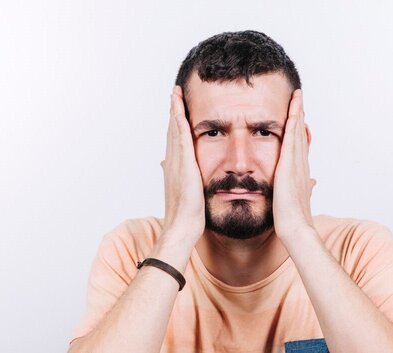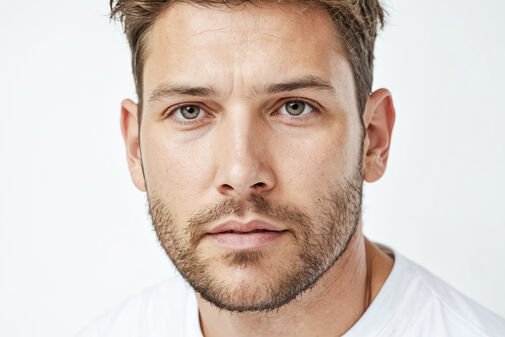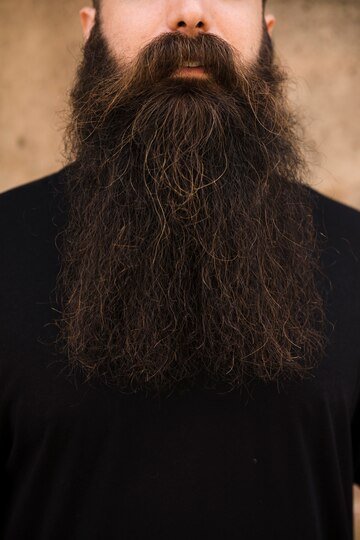Growing a beard takes time and effort, so noticing your beard thinning or developing bald patches can be disheartening. While less common than scalp hair loss, facial hair or beard loss can occur due to various reasons, such as alopecia barbae. This condition, among other factors, can leave your beard looking patchy and incomplete. Understanding the causes of beard facial hair loss is essential for finding effective solutions. In this blog post, we’ll explore the reasons behind beard loss and discuss potential treatments to help you restore a fuller, healthier beard.
Table of Contents
Toggle
Why Does Beard Fall Out?
Much like scalp hair loss, there are a variety of reasons why one may have beard hair loss. Here are some common causes:
Alopecia Barbae
This is an autoimmune disease in which the immune system of the body unintentionally targets hair follicles. This results in patchy hair loss, often in small, round patches on the beard.
Genetics
The growth of your beard is mostly determined by your genes. If your male relatives have experienced beard hair loss, you might too. Genetics can affect the thickness and growth pattern of your beard.
Stress and Hormonal Changes
Long-term stress can mess with your hormones, which might contribute to beard loss. Hormonal imbalances can weaken hair follicles and slow down beard growth.
Poor Diet
Not getting enough of the right nutrients can affect beard growth. Deficiencies in vitamins and nutrients, like biotin and vitamin D, can weaken hair follicles, making them more prone to falling out.
Skin Conditions
Conditions like ringworm or eczema can cause bald spots in your beard. These skin issues can affect hair follicles and hinder healthy beard growth.
Medications
Some medicines have side effects that include hair loss. If you notice beard loss after starting a new medication, it might be worth discussing with your doctor.
Chemotherapy
Cancer treatments like chemotherapy can cause hair loss all over the body, including the beard. The loss of hair is usually only temporary because hair usually grows back after therapy.
Understanding these causes is key to finding effective solutions and treatments for beard hair loss. By identifying the root of the problem, you can take steps to restore your beard to its full potential.
Is Beard Loss Normal?
Wondering if it’s normal to lose beard hair? Yes, it is! Typically, people shed about 20 to 30 beard hairs daily, although this number can vary. There are three stages that beard hair goes through in its development process: Anagen, Catagen, and Telogen. Losing a small number of beard hairs during these phases is perfectly normal and part of the natural hair growth cycle.
Understanding Alopecia Barbae and Its Causes
Alopecia Barbae is an autoimmune condition where the body’s immune system mistakenly attacks hair follicles, causing patchy hair loss in the beard area. This often results in small circular bald patches along the jawline, neck, and cheeks. While the exact cause is unknown, factors like stress, genetics, and other autoimmune diseases can increase the risk. Alopecia Barbae is a type of alopecia areata specifically affecting facial hair, and it can sometimes lead to more extensive hair loss if not treated.
Identifying Alopecia Barbae Symptoms
Alopecia Barbae typically presents as small, round bald patches in the beard area, often appearing suddenly. These patches can develop on the neck, jawline, and cheeks, and they may merge into larger areas over time. The affected skin is usually smooth, though it can sometimes feel itchy or painful before hair loss occurs. In some cases, hairs around the bald patches may be white or narrower at the base. Additional symptoms can include redness, irritation, and even indents on the fingernails. Receiving the appropriate care depends on the early recognition of these symptoms.
Diagnosing Alopecia Barbae
A dermatologist or doctor can diagnose alopecia barbae by analyzing microscopic samples of your hair and evaluating the extent of your hair loss. They may also perform a scalp biopsy or blood test to rule out infections or underlying conditions like thyroid disorders or other autoimmune diseases. Sometimes, specific signs like exclamation mark hairs or short vellus hairs help in the diagnosis. An experienced trichologist can also identify alopecia barbae through inspection of the skin and hair for telltale signs. Accurate diagnosis is essential for determining the best treatment options.
Treatment Options for Alopecia Barbae
Treating alopecia barbae involves several approaches. One can stimulate hair follicles with beard massages and use natural beard oils. Weekly face washing and beard exfoliation contribute to good skin maintenance. Eating a diet rich in vitamins A, C, and E can support beard growth. Reducing stress and seeking medical advice about testosterone and DHT levels are also beneficial. While there are no FDA-approved treatments specifically for alopecia barbae, treatments for alopecia areata may offer assistance. For a long-term solution, consider a beard or mustache transplant.
Considering Beard Transplants as a Permanent Solution
A beard transplant is a natural and permanent solution for men with patchy or thin beards not caused by alopecia barbae. This minimally-invasive procedure uses advanced techniques like FUE or DHI to move hair follicles from the scalp to the beard area. Performed by experienced medical professionals, it ensures natural-looking results without scarring. The transplanted hair grows naturally, providing a lasting solution to beard hair loss. After a few months, you can enjoy a fuller, thicker beard.
Understanding the causes of beard hair loss, particularly conditions like alopecia barbae, is crucial for anyone experiencing patchy or thinning facial hair. By recognizing the symptoms early and seeking appropriate diagnosis and treatment, individuals can take proactive steps toward restoring a fuller and healthier beard. Whether through lifestyle changes, medical interventions, or procedures like beard transplants, there are options available to address beard loss effectively. Ultimately, with the right approach, individuals can regain confidence and enjoy the full potential of their facial hair.



